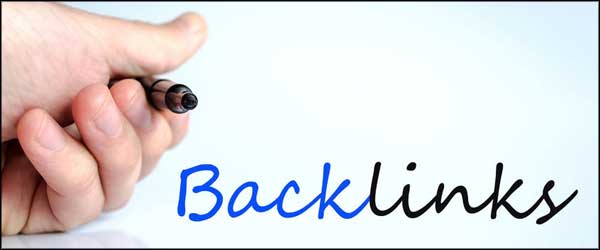Part 2 in our series on local SEO and gaining more leads with your website.
Think of local SEO as a pie chart, with various strategies being the individual slices necessary to complete the chart and deliver high search results rankings.
Backlinks might represent – very roughly – about 20% of that pie chart; so, they’re pretty important. In fact, it’s unlikely you’ll rank well in any competitive niche without at least a few strong backlinks.
Here’s why: Search engines view backlinks almost like other websites voting for yours, and not all backlinks are created equal. So, if you have better backlinks than your competitor, you’ll have a significant advantage in the search rankings.
And in any type of business, it’s all about outranking the competition!
What Are Backlinks?
Also known as an inbound link, a backlink is a link on another website that, when clicked, connects the visitor to your website. Think of it as inbound traffic to your site coming from another destination. We’ve all clicked around from website to website when searching the net; those are links. And links pointing to your site are backlinks.
Search engines like backlinks because they help determine the relevancy of a website. A website with quality backlinks tells search engines the site is a valuable source for the information being searched.
Each quality backlink to your website gives it credibility and clout, and search engines reward that with a higher site ranking in its search results.
How to Start Building Links
A good place to start your link building campaign is with your competition. A number of tools are available to help you find websites that link to your competitors by keyword or business theme.
Two good tools for viewing your competitor’s backlinks are Majestic.com and AHrefs.com. But remember, it’s about quality, not quantity. Too many low quality backlinks can get you penalized.
The building backlinks rule of thumb: If Google didn’t exist, would this link be useful? If not, don’t go after it.
Link reclamation is another way to build inbound links. Set up Google Alerts for content containing your business name, products, brand name, branded keywords, website, etc. If the content doesn’t include a link back to your website, e-mail the site owner and ask for the link to be added.
Social media is another good way to build inbound links, as is guest posting for other people’s blogs and requesting a blogger’s review of your product or service.
Backlinking for Local SEO: Dos and Don’ts
DO:
- Build your backlinks gradually with reputable websites that contain quality content and are relevant to your business.
- Keep track of your backlinks.
- Be careful of shady links that are considered spam by search engines: paid links, low-quality directories, link networks, forum spam, and automated link submissions.
DON’T:
- Use deceptive techniques, like hidden links or link farms that automatically generate pages that provide backlinks to your website. These practices could result in your website being penalized by search engines, or banned completely from search results.
- Build your backlinks too quickly. Search engines typically respond to this as manipulating the search page rankings and will penalize your site.
- Get links that are irrelevant to your business or industry, or from untrustworthy sites.
- Pay for backlinks unless you know for sure they are quality links.
Backlinks make up only one part of a complete local SEO strategy. Stay tuned for Part 3 of the Local SEO series to discover how reviews and citations can bring traffic to your website.
John Crenshaw is Director of Content, Search, & Media at Oodle.io. John is a featured speaker at the upcoming ARCSI Convention, October 20-23 in Las Vegas.






